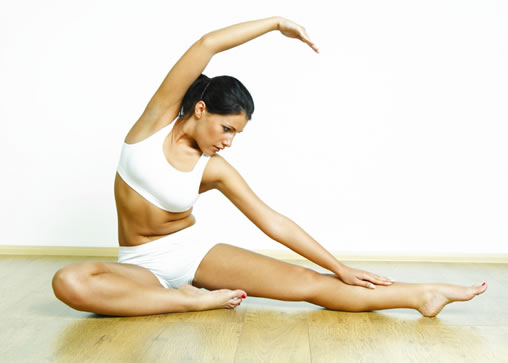Although your main object in studying this course is to learn the practices which can relieve you of your pains, rigidities, and tensions and to acquire a natural tranquility and steadiness of the mind through your knowledge and practice of Yoga, I feel sure that many of you will want to know how the mechanism works which achieves this end. Those of you who consider a study of the theoretical aspects of the Yogic approach to health and disease unnecessary and accept the practical guidance as adequate for your needs are welcome to skip over this section of the course.
In the explanation which follows I shall not be able to avoid some technical words which are necessary to give a clear idea of how physical posture influences mental attitude.
For those wishing to understand the mechanism of the practice of Yoga I must answer the significant question, "How can a few twists and turns of the body change the attitudes of the mind for the better?"
Most of you are aware of the simple fact that the nervous system is roughly divided into sensory and motor components. The sensory nerves are those which carry impulses to the brain, and the motor nerves carry implulses from the brain back to the muscles and various organs. The sensory system is served by two types of receptors, the exteroceptive and the intereoceptive. Exteroceptors, as the name implies, receive stimuli from the world around us and are present in the eyes, ears, nose, mount , skin, and musous membranes. With their help we recognize touch, temperature, taste, smell , and pain , and are able to see and hear.
The interoceptors are situated in the deeper strata - such as muscles, tendons, joints, viscera (various organs of the body), blood vessels, the internal ear, etc. They are constantly supplying the lower brain centres with information on the positions of various parts of the body relative to each other , and on the state of tension of various muscles and tendons.
The neuromuscular or motor system has a dual nature - phasic and tonic. Of these two, the phasic component is more obvious, and more easily observable. The movements of the eyeballs, the swinging of the arms, or the movement of the legs when walking are all phasic reactions. But it is the tonic reaction which not only forms the background for phasic reaction, but also sustains or inhibits it. The interoceptive-tonic mechanism does not impinge on the conscious. In general, the exteroceptive impulses excite the phasic reactions (which are passing) while the interoceptive impulses regulate the tonic reactions. It is important to remember that while the phasic movement is momentary, involving a group of muscles, the interoceptive-tonic mechanism is continuous and diffuse and provides at all times the means by whic phasic movements are possible.
ฺีBut muscle tone is only a part of a much bigger whole. The whole integrated phenomenon in modern physiological psychology is called the 'postural substrate'. The word 'postural' here denotes an all-inclusive (neuro-musculo-glandular) background which influences every action of our body no matter how trivial or momentary.
The role of visceral tension and glandular secretion is as yet far from clear. We do know, however, that the sum total of all these specific tensions provides the organism with a continuous and, in ideal circumstances, homogeneous background which influences all movement and reactions of the body, both external and internal.
It is obvious that the 'postural substrate' in a normal organism is and has to be in a continuously dynamic and fluid state, varying with the demand made on the body or mind, in order to provide an ideal background for any action contemplated. What is not so obvious is that the elasticity of this extremely malleable 'substrate' can, under conditions of stress and disease, be strained to the limit. This can lead to disintegration.
Yoga teaches that by attacking the abnormal postural substrate and reconditioning it to its previous adaptable and dynamic stat, modification of the emotional state can be obtained, leading to a state of mental tranquility.
Actually, since most of the tensions causing such a physico-psycological derangement are of long standing, they of necessity require a long time for a cure. This is eventually accomplished by 'Dhyana' or meditation at a spiritual level, but the immediate attack is started at a physical level by 'Asanas' (Yogic postures) and 'Pranayama' (Life-Breath Culture).

I love the way you write and share your niche! Very interesting and different! Keep it coming! yoga clothing
ReplyDeleteInner peace
ReplyDeleteMillions of people yearn to visit serene places and connect with natural beauty. However, they seldom become aware that true peace is found within, by silencing the
whirlwind of thoughts and living in the present moment. Along with meditation, yoga is one of the most effective tools to appease a disturbed mind. In fact, after a
series of body postures, the mind is quieter and prepared for meditation.